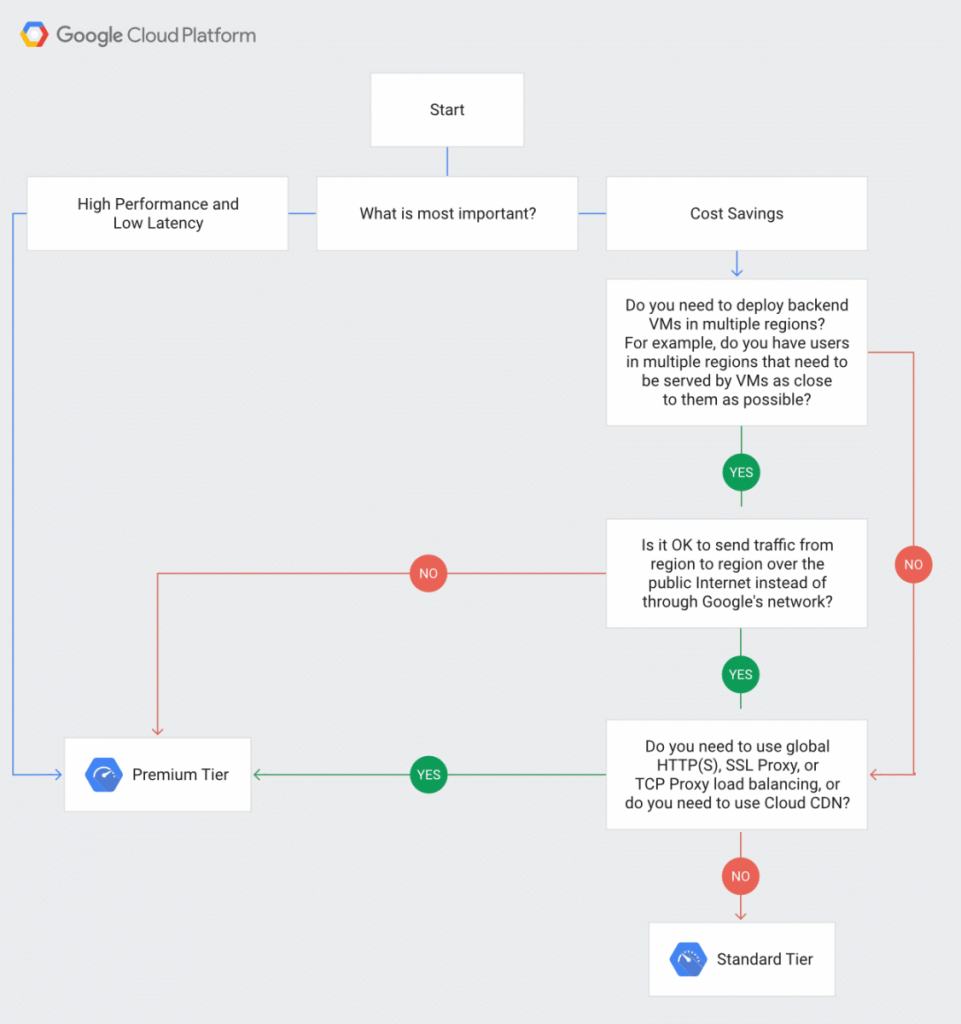GCP Provides Networking services tools to manage and scale your network easily. Here, we will discuss some of those tools which will help you manage your network as per your requirements.
Cloud Interconnects
It provides low latency, high available connection. By using Cloud Interconnects you can transfer data between your on-premises and VPC network. Also, you can directly access internal IP addresses from both networks. For dedicated interconnects, it supports 8 x 10 Gbps connections (80 Gbps total) and 2 x 100 Gbps connections (200 Gbps total) ethernet connections per interconnect. For partner interconnect, it supports from 50 Mbps to 10 Gbps up to 8 x 10 Gbps interconnect attachments (VLANs) (80 Gbps total).
A colocation facility for dedicated interconnects is where Google has a point of presence, which allows you to connect your on-premises network with Google’s network. Edge availability domains provide isolations during scheduled maintenance in metropolitan areas.
Virtual Private Cloud (VPC)
VPC provides you flexibility to scale and control how workloads connect regionally and globally. By using VPC you can bring your own IP addresses to google network across all the regions. You don’t need a connection in each and every region, a single VPC can span multiple regions without communicating across the public internet. Google cloud VPCs are Global, Shareable, Expandable and Transparent. It lets you scale the IP space of any subnets without any downtime or workload shutdown. You can use VPC flow logs for near real-time logging to monitor your deployment for both network forensics and performance analysis.
Cloud DNS
Google Cloud DNS (Domain name system) is scalable, reliable, and managed authoritative DNS service. Cloud DNS is also programmable. By using CLI, API or simple user interface you can easily create, update, publish and manage millions of DNS zones and records.
GCP provides options to let you choose network services tier as per your requirements. It brings customization of underlying networks to let you optimize for cost or performance on a per workload basis.
GCP has divided its networking tier into two parts Premium Tier and Standard Tier. Let’s discuss the advantages of both tiers.
Premium Tier Network
Premium Tier is recommended for high performance routing. Users can also take advantage of the global fiber network, with the globally distributed Points of Presence(PoP). Premium tier uses Cold potato policy to route the from data-center to visitor. In Cold potato policy the ISP carries traffic as far as possible on its own network before handing it off to a downstream ISP.
Standard Tier Network
In Standard Tier Network speed is compromised as it uses POPs(Points of Presence) near the data center where our content resides. It uses hot potato policy to ingress and egress traffic locally to your instances. In hot-potato routing, an ISP hands off traffic to a downstream ISP as quickly as it can.
You can take help of the given screenshot to decide what to choose between Standard Tier and Premium Tier.







